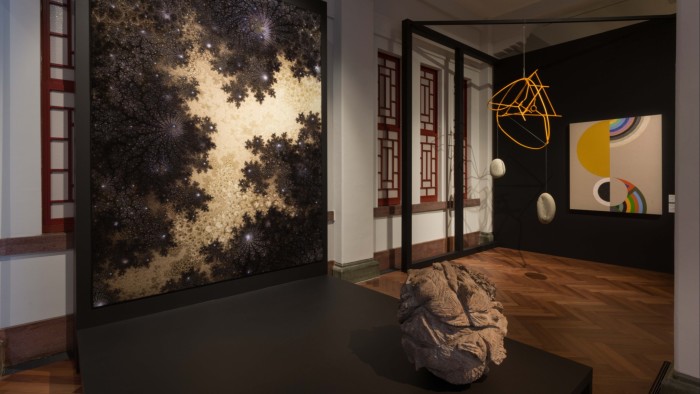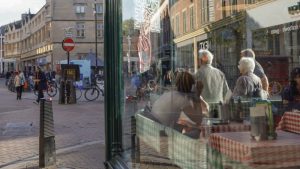Art Week puts Tokyo in the picture

Unlock the Editor’s Digest for free
Roula Khalaf, Editor of the FT, selects her favourite stories in this weekly newsletter.
“There is a new obsession with Japan,” says Tim Blum, whose light-filled space, Blum & Poe, in Tokyo’s trendy Harajuku district was, he thinks, the first foreign gallery to open in the capital 10 years ago. “Tokyo is definitely the cultural capital of Asia — there are more and more Asians and westerners coming here. The city should be so much more than it is at the moment, but that is changing, notably because of the extension of tax-free zones.”
Blum, as it is now known, is one of 40 galleries and 13 institutions that participated in last week’s third full-scale edition of Art Week Tokyo (AWT), a citywide celebration of contemporary art. It was anchored by AWT Focus, a selling show curated by Mori Art Museum director Mami Kataoka, featuring artists from the region and a smattering of westerners, held in the private Okura Museum of Art. During the week, 40 free-to-board buses shuttled visitors round participating galleries, which can be far apart and difficult to find in this megacity.
Behind AWT are two founders, gallerist Atsuko Ninagawa and art collector Kazunari Shirai, with financial support from the Tokyo Metropolitan Government and the Agency for Cultural Affairs, as well as sponsorship from Sumitomo Mitsui Banking Corporation (SMBC). Galleries, except for those on the VIP circuit, participate for free. “The market for contemporary art in Japan is still not as big as it could be,” says Shirai. “I am confident it will take off once there is a broad social recognition of the value of contemporary art, which is precisely what AWT is working to build.”

Significantly, Art Basel collaborates with AWT by sharing VIP lists and expertise, and this year 4,000 VIPs signed up for the event. However, according to Ninagawa, Art Basel does not contribute financially. While this collaboration has long sparked rumours that the Swiss fair group is taking an increasingly close interest in Japan, it regularly denies wanting to establish its own art fair in Tokyo.
Meanwhile, AWT aims to expand the market and “create a space for younger collectors”, says Ninagawa. “There is a need to educate the market, as here in Japan there is no tradition of contemporary art, which is not taught in schools.” She harks back to the bubble economy of the late 1980s, when Japan frantically bought Modern and Impressionist art. The collapse of the bubble in 1990 saw the art market burn out in what are called the “lost decades”, and Japan has remained the sleeping beauty of the art world ever since.


But things are changing rapidly. “We are seeing foreign buyers showing a significant interest in young Japanese artists, and even a few young Japanese collectors buying international names,” says Jeffrey Rosen of the gallery Misako & Rosen. Japanese artists remain affordable compared with many western names, with the weak yen a further inducement. Much of the art shown during AWT was under $10,000 but, for example, a new painting by an established artist such as Yoshitomo Nara at Blum was priced at more than $1mn. The show was sold out.
Gradually, foreign galleries are moving in: the latest arrival is American mega-gallery Pace, with a smart new three-storey showroom designed by Sou Fujimoto in the luxury Azabudai Hills development. It was inaugurated in September and for AWT featured sculptures, weavings and ceramics by the New York-based artist Arlene Shechet, priced from $50,000-$250,000. Some were quickly sold to Japanese collectors, according to the gallery. French dealer Perrotin, which opened its first space seven years ago, added a boutique “salon” space beside its existing gallery this year, coupled with a bookshop and store.

“There is a big difference in AWT this year: many more visitors and more from the surrounding regions: Korea, Taiwan and the Philippines,” says Doryun Chong, chief curator of Hong Kong’s M+ museum. The institution has been actively buying Japanese art since its inauguration three years ago, and will work with the National Art Centre Tokyo on an exhibition about Japanese art next autumn.
“Japan has been insular for so long,” says Blum, who first moved to the country in 1990. But with so many museums and art centres being established, fairs such as Tokyo Gendai (also backed by SMBC) and gallery weeks such as AWT, it seems the market for contemporary art in Japan is finally being shaken out of its long slumber.
#Art #Week #puts #Tokyo #picture





